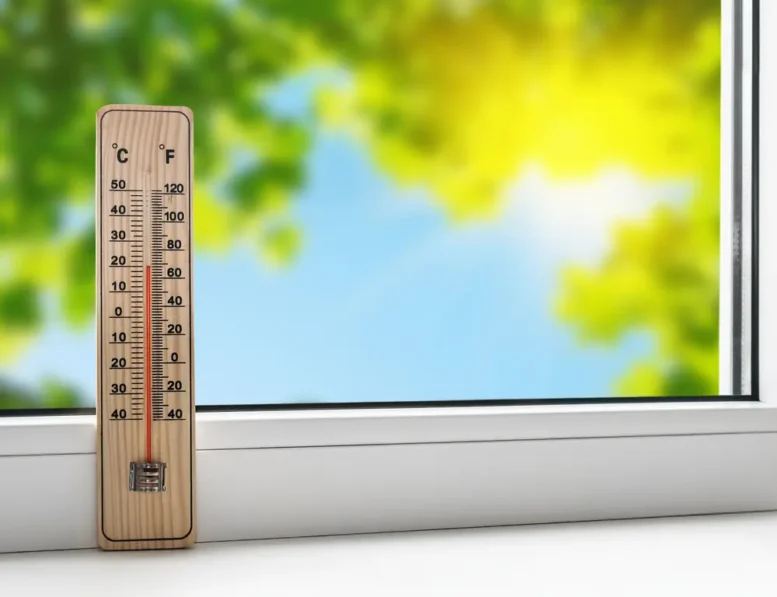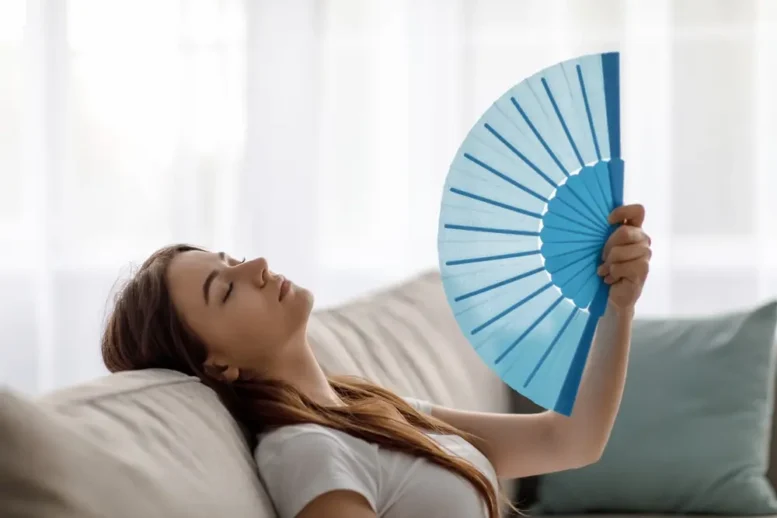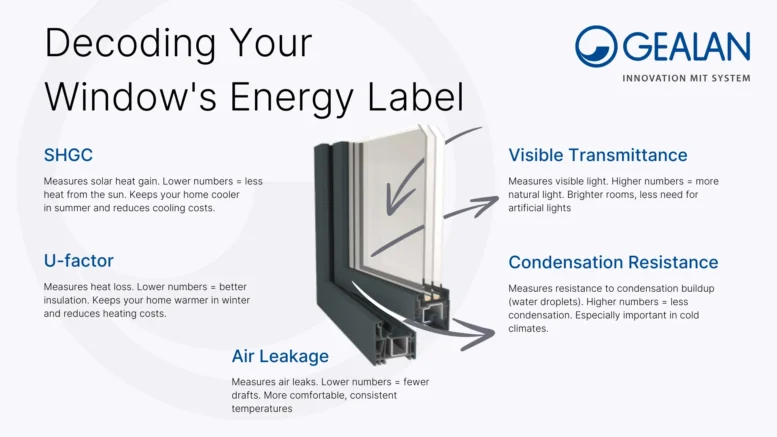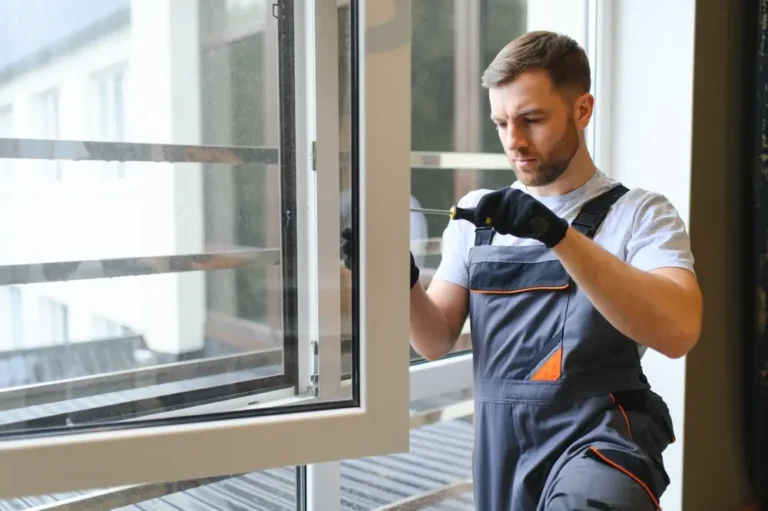Decoding Window Energy Efficiency Ratings: A Homeowner’s Guide
Most people are familiar with the energy efficiency labels found on appliances, but did you know your windows come with similar ratings? Window energy efficiency ratings are key to ensuring your home stays comfortable, receives the right amount of natural light, and keeps energy costs in check. However, for many homeowners, these ratings can seem confusing, filled with numbers and acronyms that feel more like a secret code than helpful information.
This guide will simplify window energy performance ratings, helping you make well-informed decisions when it’s time to replace your old windows with new energy-efficient windows. By the end, you’ll not only understand what those ratings signify but also how they directly impact your home’s comfort and your energy bills.
The Fundamentals of Energy Efficiency

Before we dive into the specifics of window ratings, let’s first clarify what energy efficiency truly means. In simple terms, an energy-efficient home requires less energy to maintain a comfortable indoor temperature throughout the year. This means less heat escapes during winter, and less unwanted heat enters during summer. The result? Lower heating and cooling costs, a reduced carbon footprint, and a more comfortable living environment.
Windows play a significant role in your home’s overall energy efficiency. Outdated or poorly performing windows can leak warm or cool air, driving up your energy bills and making your home drafty. This is where understanding window energy efficiency ratings becomes essential — they guide you toward choosing windows that will improve your home’s performance.
Who Sets the Standards?
In the United States, two main organizations establish and regulate the standards for window energy performance:
- National Fenestration Rating Council (NFRC): A non-profit organization that sets the standards for testing and rating the energy performance of windows, doors, and skylights. They are the go-to authority for ensuring consistency and reliability in these ratings.
- Environmental Protection Agency (EPA): The EPA oversees the ENERGY STAR program, a voluntary initiative that identifies products meeting stringent energy efficiency criteria. Products with the ENERGY STAR label have been independently certified to save energy and reduce greenhouse gas emissions.
You’ll encounter ratings from both the NFRC and ENERGY STAR when researching replacement windows.
Decoding Key Window Energy Performance Ratings
Let’s take a closer look at the critical window energy performance ratings you’ll find on NFRC labels:
U-Factor
Measures how well a window prevents heat from escaping. The lower the U-factor, the better the window insulates, keeping your home warmer in the winter and saving you money on heating costs.
Solar Heat Gain Coefficient (SHGC)

The SHGC indicates how much solar heat passes through the window. In warmer climates, a lower SHGC is preferred to minimize heat gain and keep your home cooler. Conversely, in colder climates, a higher SHGC can help capture solar warmth for passive heating.
Visible Transmittance (VT)
This rating measures how much natural light passes through the window. A higher VT allows more daylight into your home, potentially reducing the need for artificial lighting and enhancing indoor comfort.
Air Leakage
This rating assesses how much air seeps through the window frame. Lower air leakage means fewer drafts, leading to a more comfortable and energy-efficient home.
Condensation Resistance
While optional, this rating indicates a window’s ability to resist condensation buildup, which is especially important in colder climates to prevent moisture-related issues.

A Simple Analogy to Understand Window Performance
Think of your energy-efficient windows as your winter coat — a simple way to visualize how they work:
- U-Factor: This is like the thickness of your coat — the thicker the insulation (lower U-factor), the warmer you stay.
- Solar Heat Gain Coefficient (SHGC): Think of it as the coat’s color — a darker coat (higher SHGC) absorbs more heat from the sun, while a lighter one (lower SHGC) reflects it. The lower the number, the less you’ll spend on cooling.
- Visible Transmittance (VT): This is the size of the coat’s zipper — a larger opening (higher VT) lets in more light, brightening your space. The higher the number, the more natural light is let in.
- Air Leakage: Imagine how tightly a good sealing gasket works: a well-sealed gasket with lower air leakage prevents cold drafts, keeping your home comfortable and energy-efficient. The lower the number, the fewer drafts you’ll experience.
- Condensation Resistance: Consider the water-resistant finish — better protection (higher rating) means fewer issues with condensation.
What ENERGY STAR Means for Your Windows
The ENERGY STAR label isn’t just a badge — it’s a promise. It signifies that the window meets the EPA’s strict energy efficiency standards, tailored specifically to your climate zone. ENERGY STAR-certified windows are designed to cut down on energy usage, lower your bills, and contribute to a greener world. These windows are independently tested, ensuring they deliver the quality and performance you expect.
How to Choose the Right Replacement Windows

Understanding window energy ratings is your first step toward making the best choice when replacing your windows. Here’s what to consider:
- Your Climate: In hot areas, look for windows with a low SHGC to block excess heat. In colder regions, prioritize a low U-factor for better insulation.
- Your Priorities: Love natural light? Opt for windows with a high VT. Concerned about drafts? Choose windows with a low air leakage rating.
Why These Ratings Matter
Grasping these window ratings does more than help you choose wisely — it shows you how the right windows can:
- Lower Your Energy Bills: Well-insulated windows reduce heat loss and heat gain, meaning your HVAC system doesn’t have to work as hard.
- Increase Home Comfort: Consistent temperature, fewer drafts, and potential noise reduction create a more enjoyable living environment.
- Benefit the Environment: Energy-efficient windows reduce your overall energy consumption, making your home more eco-friendly. Want to dive deeper? Check out our blog for more on the advantages of upgrading to energy-efficient windows.
The Bigger Picture: What’s Behind Window Ratings

It’s important to note that window energy ratings assess the whole package — not just the glass. This includes the frame material, spacers between glass panes, and even the type of gas fill used in double-pane or triple-pane windows. So, when comparing ratings, ensure you’re looking at the complete window performance, not just the glass itself.
Table of Contents
Make the Right Choice for Your Home
The key takeaway is this: don’t simply accept any replacement windows. Take the time to understand energy efficiency ratings and choose windows that fit your climate, meet your needs, and align with your budget. By making an informed choice, you’ll enjoy a more comfortable home, save on energy costs, and reduce your environmental impact.
Take the next step toward a more energy-efficient home: Connect with GEALAN to find a local window distributor near you and get a free consultation and personalized quote today.


